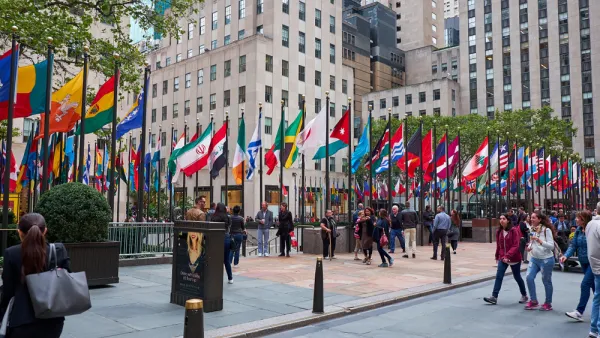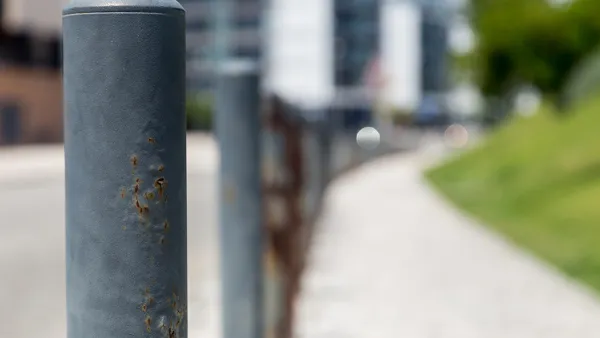Strategies for securing public spaces from vehicle attacks and other acts of terrorism without sacrificing accessible, vibrant urban places.

How can cities better protect people in public spaces from vehicle attacks and other threats? Writing in Bloomberg CityLab, John Surico attempts to unpack this question in the wake of the deadly attack in New Orleans, in which a truck was used to kill over a dozen people as protective bollards were being replaced.
According to Rob Reiter, a security consultant who specializes in vehicle attacks, says cities should more carefully evaluate potential “collision points” where pedestrian-heavy corridors intersect with roadways open to vehicle traffic. Reiter points to New York City’s low-tech intervention for New Year’s Eve: “dozens of garbage and dump trucks laden with sand, parked bumper-to-bumper to block any intrusions,” providing a practically impenetrable perimeter.
Outside of special events, cities can use “sculptural barriers,” trees, and other decorative — but solid — items to create a “positive perimeter” that offers protection without creating a hostile environment.
Surico concludes that “The long-term benefits of security improvements can’t necessarily be counted in just lives saved. Just as a community that’s more hospitable to older adults or children is more hospitable to everyone else, too, making spaces better protected from vehicle attacks can also just make them better, period.”
FULL STORY: What Can Cities Do to Protect Public Spaces From Vehicle Attacks?

National Parks Layoffs Will Cause Communities to Lose Billions
Thousands of essential park workers were laid off this week, just before the busy spring break season.

Retro-silient?: America’s First “Eco-burb,” The Woodlands Turns 50
A master-planned community north of Houston offers lessons on green infrastructure and resilient design, but falls short of its founder’s lofty affordability and walkability goals.

Delivering for America Plan Will Downgrade Mail Service in at Least 49.5 Percent of Zip Codes
Republican and Democrat lawmakers criticize the plan for its disproportionate negative impact on rural communities.

Test News Post 1
This is a summary

Test News Headline 46
Test for the image on the front page.

Balancing Bombs and Butterflies: How the National Guard Protects a Rare Species
The National Guard at Fort Indiantown Gap uses GIS technology and land management strategies to balance military training with conservation efforts, ensuring the survival of the rare eastern regal fritillary butterfly.
Urban Design for Planners 1: Software Tools
This six-course series explores essential urban design concepts using open source software and equips planners with the tools they need to participate fully in the urban design process.
Planning for Universal Design
Learn the tools for implementing Universal Design in planning regulations.
EMC Planning Group, Inc.
Planetizen
Planetizen
Mpact (formerly Rail~Volution)
Great Falls Development Authority, Inc.
HUDs Office of Policy Development and Research
NYU Wagner Graduate School of Public Service




























